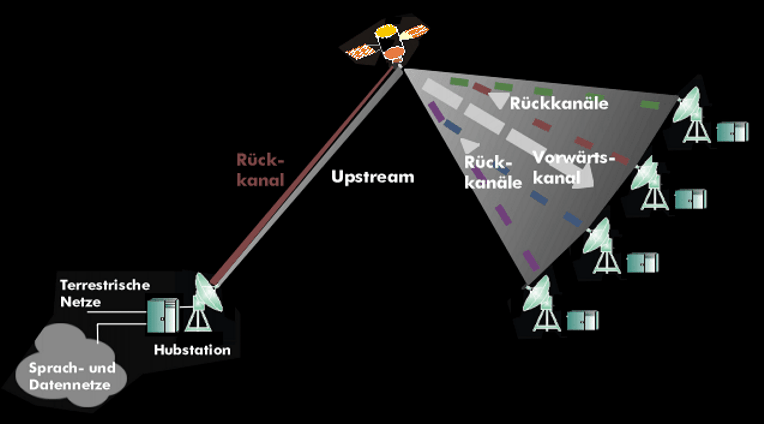DVB return channel for satellite (DVB-RCS)
For interactive communication via satellite and the use of distribution services, the DVB organization and the European Telecommunications Standards Institute( ETSI) have adopted the EN 301790 standard for the return channel, DVB- RCS (Return Channel for Satellite). Based on this standard, terminal equipment can receive digital television programs and computer data at transmission rates of up to 50 Mbit/s and communicate via the return channel at up to 2 Mbit/s via satellite.
DVB-RCS supports two channel directions: a forward channel from the satellite to the terminal and a narrower return channel in the opposite direction. As with broadcasting using DVB-S, the forward channel uses a carrier frequency and the full bandwidth or power of the transponder. Communication from the satellite to the terminals is accomplished by channel splitting the TDM signal. The forward channel uses quadrature phase shift keying (QSPK) and time division multiplexing (TDM) and offers configurable transmission rates between 1 Mbps and 50 Mbps.
For the return channel, the terminals share the capacity of one or more transponders and transmit the signals burst-like in MF- TDMA(Multi Frequency TDMA). The return channel system thus works with several carrier frequencies, which are allocated in the terminals in corresponding time slots. This means that many terminals can transmit their data to the hub at the same time.

